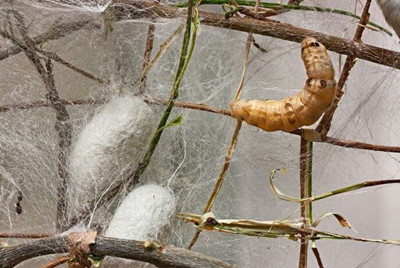
Robot spiders spinning giant silk webs to catch space trash? What may sound like sci-fi fodder to some might actually ignite the imagination of others. Thanks to its exceptional strength, toughness and thermal stability, silk has attracted a lot of attention in recent years, providing inspiration to manufacture synthetic counterparts that mimic its biological structure and function.
Partially supported by the EU-funded FLIPT and SABIP projects, a team of scientists has shown that natural silks can withstand the cold, while some even get stronger the colder it gets. Their findings were published in the journal Materials Chemistry Frontiers. They investigated the behavior and function of several animal silks by focusing on the multi-fibrillar fibers of Antheraea pernyi silkworm cooled down to –196 °C.
A news release by project partner the University of Oxford summarizes the findings. It notes that "the team was able to show not only 'that' but also 'how' silk increases its toughness under conditions where most materials would become very brittle." It adds: "Indeed, silk seems to contradict the fundamental understanding of polymer science by not losing but gaining quality under really cold conditions by becoming both stronger and more stretchable."
The team found that silk's toughness is based on its tiny fibers. "It turns out that the underlying processes rely on the many nanosized fibrils that make up the core of a silk fiber," according to the same news release. In the journal article, the researchers state: "We propose that the highly aligned yet relatively independent nanofibrillar structure allows the partly frozen molecular chain at cryogenic temperature to be activated to induce crack blunting, to allow fibril slipping, and to facilitate the effective unfolding of silk fibroin molecular chains thus preventing or delaying brittle failure of the whole fiber." They conclude: "We envision that our study will lead to the design and fabrication of new families of tough structural composites using natural silk or silk-inspired filaments for testing applications even at arctic or indeed outer-space conditions."
The news release suggests that the wide range of applications that could build upon the findings of the study range from "new materials for use in Earth's polar regions to novel composites for light-weight airplanes and kites flying in the strato- and mesosphere to, perhaps, even giant webs spun by robot spiders to catch astrojunk in space."

